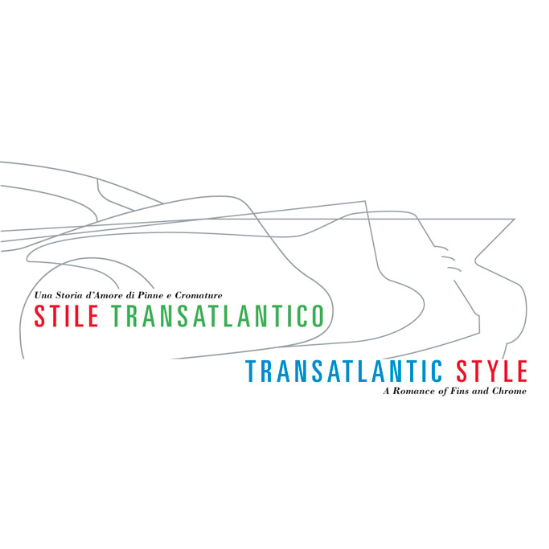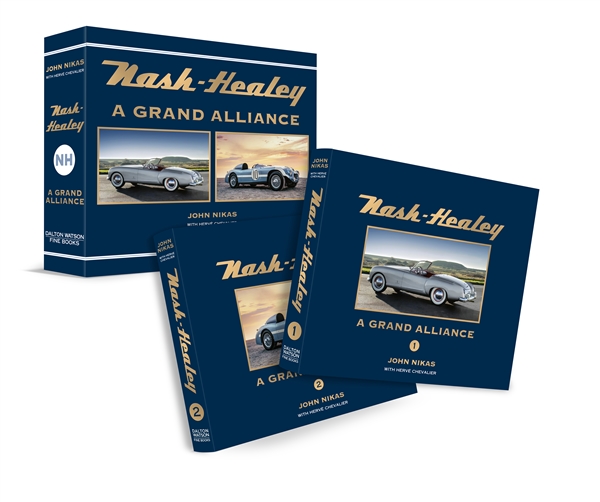
Nash-Healey – A Grand Alliance examines in exquisite and exacting detail the story behind America’s first postwar sports car and the unique Anglo-American partnership between Nash and Healey that gave it life, which became an international triumvirate with the later involvement of famed Italian coachbuilder Pinin Farina.
Focusing on the lives and careers of the men behind these fantastic machines, this book dives into their prior accomplishments, before reviewing the design and development of the Nash-Healey roadsters and coupes. It also explores the marque’s incredible competition record at iconic races like the Mille Miglia, 24 Hours of Le Mans and Alpine and Monte Carlo rallies. Lavishly illustrated with almost 1,200 images, most never before published, including several from Donald Healey’s own personal photographic collection, this book is essential for all Nash-Healey enthusiasts and fans of sports cars from the breed’s golden era.
- 2-volume set in slipcase
- 800 pages
- 1,192 illustrations
- Foreword by Donald Osborne
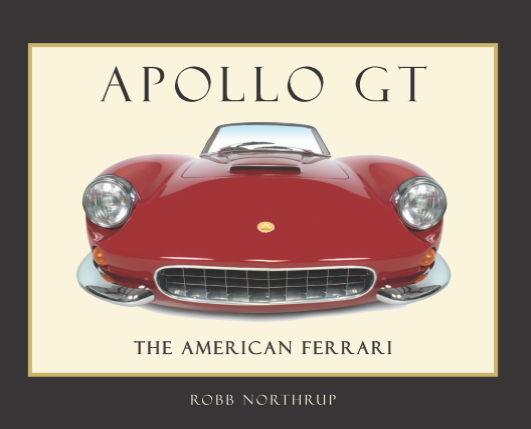
‘If a Buick Special ever got a fierce ambition to become a Ferrari – and tried hard enough – it would be likely to end up just about like this.”
Car and Driver magazine – September, 1963
Such prophetic words from Car and Driver magazine back in 1963 underscore the goal of three California twenty somethings who sought to build a world-class grand touring sports car. And, for a while, found themselves on equal ground with Europe’s best.
Their concept: A marriage of Italian style and the mechanical excellence of a premier American manufacturer – Buick – to create a true gran turismo sports car with head-turning looks, outstanding performance and comfort, and something that, up to then, was not common among European exotics: Reliability!
Their challenges were legion: A complex product combining hand-crafted bodies with mass-produced engines and transmissions on an assembly line spanning two continents and an ocean. A limited capability for product development and testing. And the need to create a marketing program to promote the car to an enthusiast public as well as develop a distribution channel to get the car into their hands. All this with limited operating capital.
The result? The Apollo was highly praised by both road testers and owners alike. “Workmanship is of the highest quality…comparable to cars costing twice that of the Apollo” crowed one magazine report. “…the Apollo handles as well or better than a 2+2 Ferrari, an Aston Martin DB4 or a Sting Ray Corvette,” exclaimed another. High praise indeed from the critical press!
And the owners? “I dearly love my Apollo!” enthused singer Pat Boone. And this from another owner: “It’s a wonderful work of art. You can see the quality. You can feel the excitement they felt when they were hammering it out, putting it together and driving it for the first time. It is a milestone, a one-of-a-kind car and no one can really compare anything to it. It stands on its own.”
This is the story of the Apollo GT. The American Ferrari.
Details: 8.5″ x 11″, 138 pages. 87 color and black & white photos and illustrations.
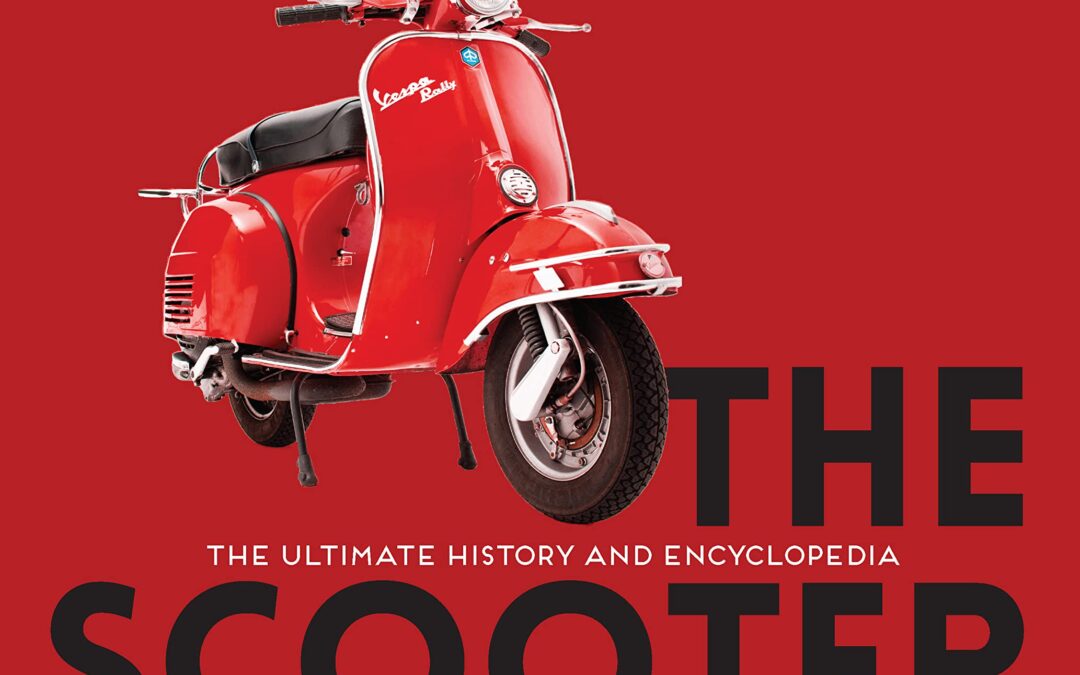
The Scooter Bible is an entertaining, colorful, and authoritative history of the little motorbikes that could.
Beginning with the first motor scooter in 1902, Eric Dregni is your guide to everything from the postwar American scooter boom to the golden age of Italian and European scooters, the rise of Mod scooter culture in England . . . right up to modern electric scooters.
Today, nostalgia for vintage Vespas, Piaggios, Cushmans, Lambrettas, and other top brands drive a new thirst for retro-inspired scooters in showrooms around the world. This revised and updated edition of The Scooter Bible brings the story up to date with the drive for zero emissions via electric vehicles. Throughout, author Eric Dregni offers you a wealth of imagery: historic black-and-white photos, evocative period advertisements, manufacturer photos, and more—over 500 images! Along the way, he also shows you scooter evolution, changing technologies, and scooter appearances in popular culture.
And as the most comprehensive scooter book ever, The Scooter Bible also includes the world’s most exhaustive encyclopedia of scooter brands, from Puddlejumper to Piaggio, Ducati to Doodlebug, and Zündapp Bella to Genuine Stella. The Scooter Bible is all you need before kick-starting your scooter engine to life and praying for ever more speed.
Indeed, scooters are mechanical marvels on two wheels. Streamlined spuds. Mutant oddballs of Jet Age styling gone berserk. Innovative inventions shoehorned like sardines into miniaturized monocoque bodies. Engineering and styling enigmas (the stranger the better). They are the weird and the wonderful. And they are all here in The Scooter Bible

The American “, the story of Tom Tjaarda in Turin, is not only that of his beautiful cars. He belongs to the genre of the adventuresome. Those who cross the oceans, throw themselves headlong, seize the opportunities of life. They manage to get to where they want and come to terms with profound thoughts. Of these young people, literature is full, some have become protagonists of fantastic novels.This “biography” spans the middle of the 20th Century,from Battista and Sergio Pininfarina,to Renzo Carli to Franco Martinengo, to Giorgetto Giugiaro and, of course, Alejandro De Tomaso. Cars, men and a whole era now disappeared. A new way to tell the story.

In 1969, two of the most famous sports car manufacturers in the world, one German and one Italian, built what even today are considered the epitome of what a race car should be. The ensuing fight between the Porsche 917 and the Ferrari 512 S, driven to the limit by some of the sport’s greatest stars, has forever been regarded as a special two years in sports car racing, captivating a global audience and providing the storyline for Le Mans, an epic Hollywood film. The legendary Porsche vs. Ferrari duel started at the Daytona International Speedway in January 1970, and although the battle lasted less than two years, ending at Watkins Glen in the summer of 1971, it left a trail of memories in its smoky wake. EIGHTY FOUR HOURS OF ENDURANCE captures many of those memories in a richly illustrated book that bundles together the six American rounds of the FIA World Championship for Makes in 1970 and 1971. Daytona, Sebring and Watkins Glen. 24, 12 and 6 hours in length. Times two. Featuring 520 photographs, 230 black & white and 290 color, and supplemented by detailed race reports, results and maps, you’re taken onto the high banks at Daytona, down the concrete runways of Sebring and around the short, fast Watkins Glen circuit in upstate New York. The drivers included on the 244 pages of the book are a veritable who’s who of 1970s motor racing—Andretti, Ickx, Redman, Siffert, Rodriguez, Elford, Gurney, Larrousse, Cevert, Oliver, Posey, Beltoise, to name a few. EIGHTY FOUR HOURS OF ENDURANCE takes you back to the grid, onto the track, into the pits, around the paddock and behind the scenes for a memorable ride through time.
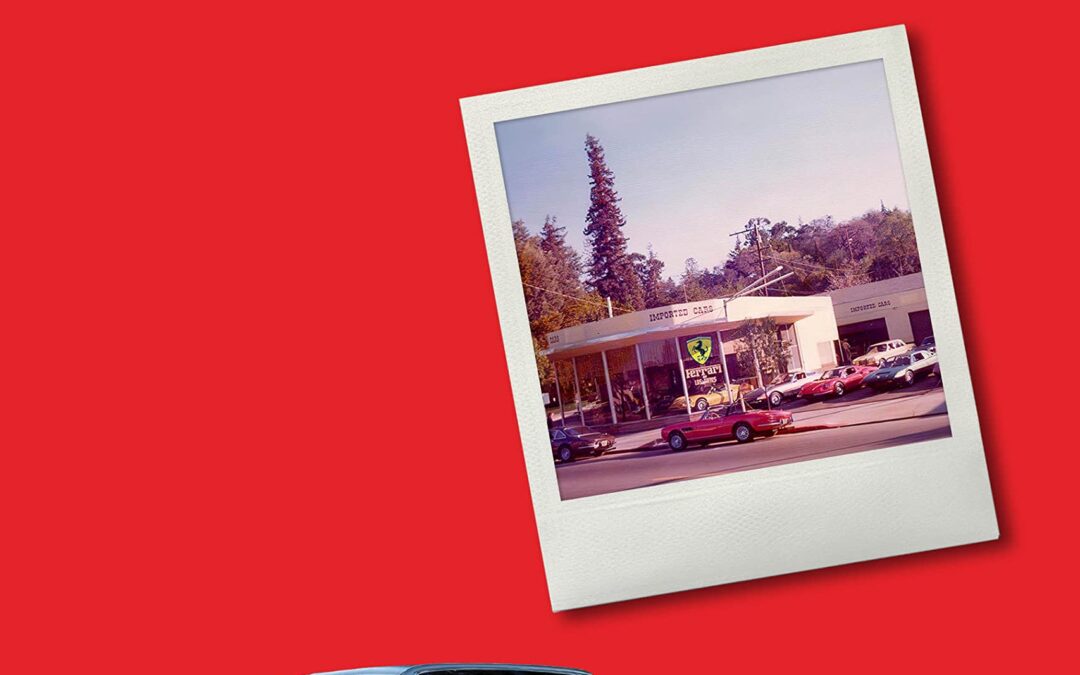
When Ferrari of Los Gatos opened, few people could afford an expensive sports car. In 1976, the average annual income was $12,686, and a new home cost about $48,000. Motorists in California could only buy gas on odd or even-numbered days based on the last digit of their license plate, due to the global oil crisis. Times were tough, and people were hesitant to take chances, especially with a car that cost more than a house.
At the same time, Brian Burnett and his friend Richard Rivoir had the idea of starting a Ferrari dealership. The Dealer is the story of how one dealership, Ferrari of Los Gatos, fueled the rise of the iconic Italian sports car in the U.S. market on its way to becoming the number one Ferrari dealer in North America. Even Enzo Ferrari himself took notice, flying Brian and the other dealers to Italy to show his appreciation for their success. Customers included movie stars, sports celebrities, entertainers, and some with unusual sources of income and a strong desire for a low profile. Along the way, Burnett made friends, enemies, and millions of dollars, only to lose everything in the blink of an eye.
Author Jim Ciardella shows readers a part of Ferrari that no one has even seen, with behind-the-scenes stories as told to him by Richard Rivoir and Brian Burnett, their customers and employees, and other North American dealers who all rode high and eventually burned out on selling fast cars.
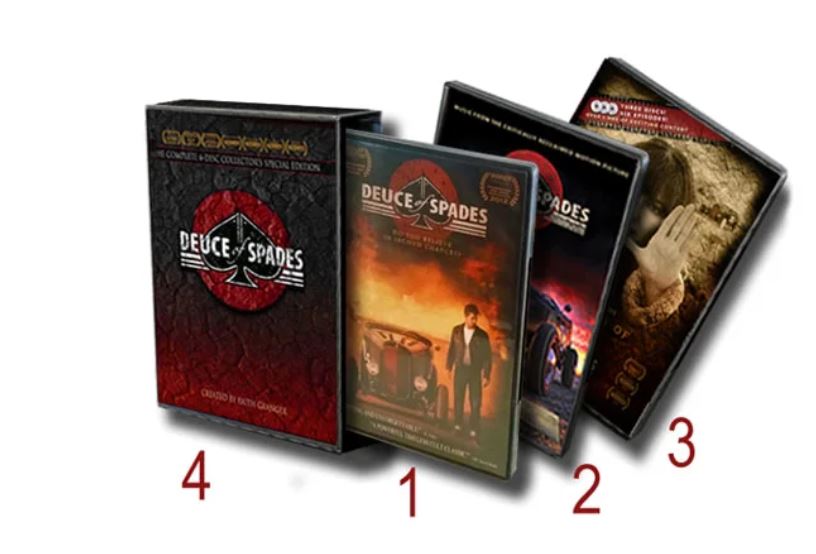
THE COMPLETE 6-DISC COLLECTOR’S SPECIAL EDITION BOX SET INCLUDES:
- The film DVD: Winner of 7 film awards! A period drama set in the 50’s hot rod era. 128 minute runtime, widescreen – all region 24p NTSC – compatible with pal systems. Includes bonus features and Director’s commentaries! Subtitled in 8 foreign languages, including Spanish, French, Italian, German, Finnish, Swedish, Dutch and Danish. Both Stereo and Surround Sound mixes included.
- The film double album soundtrack: Disc One features 19 exciting 50’s tunes from the film, perfect for cruising! Doowop, rockabilly, swing and ballads to keep you company. Disc Two features the haunting music of composer/recording artist FAITH GRANGER (“Alternate Faith”) with short excerpts from the film dialogues, so you can relive those great moments.
- “AGAINST ALL ODDS, THE MAKING OF” 3-discs bonus DVD set: Featuring a disc loaded with DEUCE OF SPADES BONUS FEATURES (8 cast interviews, 13 deleted scenes, the cars of DEUCE OF SPADES, and one very funny blooper reel) and the 2-discs anticipated documentary mini series “AGAINST ALL ODDS, THE MAKING OF DEUCE OF SPADES”. This entertaining, educative and inspiring documentary features never-seen-before behind the scenes footage showing guerilla filmmaker Faith Granger and her cast, in action. Watch the making of some of the key scenes, get up close and personal as the filmmaker shares her amazing journey and ‘tells it like it is’: From horror stories to miracle stories, this is as real as it gets. Special guests include world renouned car celebrity GENE WINFIELD, American Hot Rod foundation curator/historian JIM MILLER, Emmy award winner PATRICK CYCCONE, lead actor Timothy Luke and many more.
- A beautiful color slip case to store and display the above items.
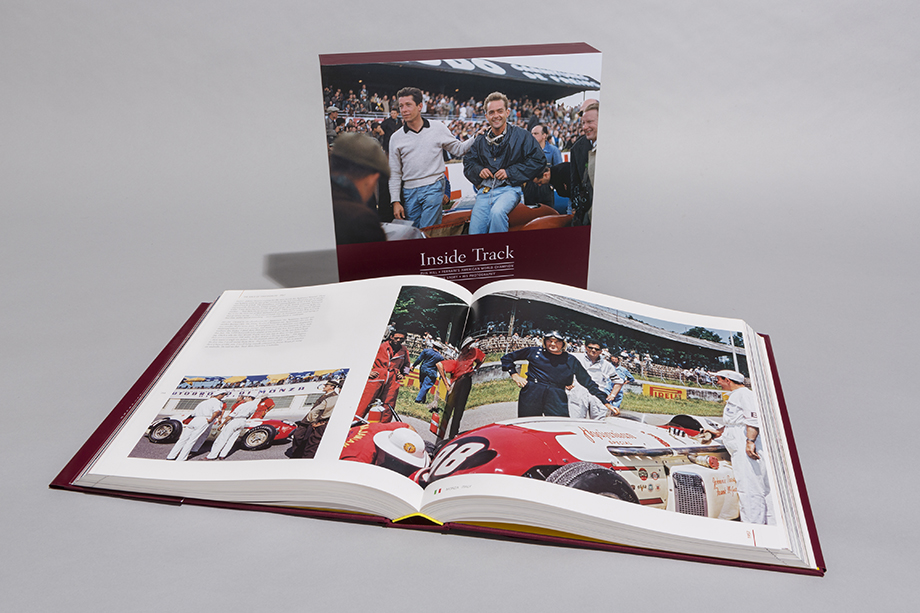
Phil Hill (1927-2008) was Ferrari’s 1961 Formula 1 World Champion Driver – and the first, and to date only, American-born sportsman to win world-class motor racing’s premier road racing title. He was also three-time winner of both the Le Mans 24-Hour and the Sebring 12-Hour races, twice-winner of the Buenos Aires and Nürburgring 1000Kms classics, and twice-winner of the Formula 1 Italian Grand Prix.
Phil Hill drove not only for Ferrari. He also raced at top international level in Cobra, Ford GT, Chaparral, Porsche, Cooper and Aston Martin cars amongst others. He was a global player, an internationalist who saw his first Formula 1 car at the British Goodwood race circuit as early as 1950
Twelve years later he would himself be Ferrari’s reigning Formula 1 World Champion Driver.
Through all his racing up to 1962 Phil Hill used his favoured Leica cameras “… to show the folks back home” the motor racing scene he so loved in fantastic quality colour.
Built around this very personal and long-private photo collection of mainly Kodachrome motor racing photography – intimate, candid, often exquisitely composed, a superb-quality colour record of a bygone age absolutely brim-full of nostalgia, personality, spectacle and drama.
BOOKSHOP EDITION
Reviewing the evocative years 1950 to 1962, the single volume Bookshop Edition covers 80 events with some 530 colour photographs, each captioned in Phil’s inimitable style and all beautifully laid out over 488 pages of the finest Italian art paper. The book is hardbound with a cloth case and a printed jacket, and will be delivered in a matching heavyweight slipcase.
The photographs themselves cover many of the most important events in Phil’s long and illustrious racing career, from his early successes in SCCA national races in the United States of America – at such venues as Pebble Beach, Elkhart Lake, Palm Springs, Sebring, Daytona and, of course Watkins Glen – through his breakout years onto the International scene in Europe and South America, to his hugely successful Championship-winning years with Ferrari.
His uniquely insightful coverage includes his three formative drives in the Carrera PanAmericana (1952-54), his early visits to the Le Mans 24-Hour race (which he would ultimately win no fewer than three times with Ferrari) and his subsequent drives in the great 1000Kms and World Championship sports car races on circuits as diverse as Reims-Gueux, Buenos Aires, Caracas, Monza, the Nürburgring, Montlhéry and Daytona, plus of course Sebring and Le Mans.
The Bookshop Edition also covers Phil Hill’s many appearances as a Ferrari Formula 1 works team driver, culminating in his Drivers’ World Championship title in 1961. Completing the story are his many appearance in numerous non-World Championship events, including fabulous photographs from his two capacity-class World Land-Speed Record drives for MG at the Bonneville Salt Flats in 1957 and 1959.
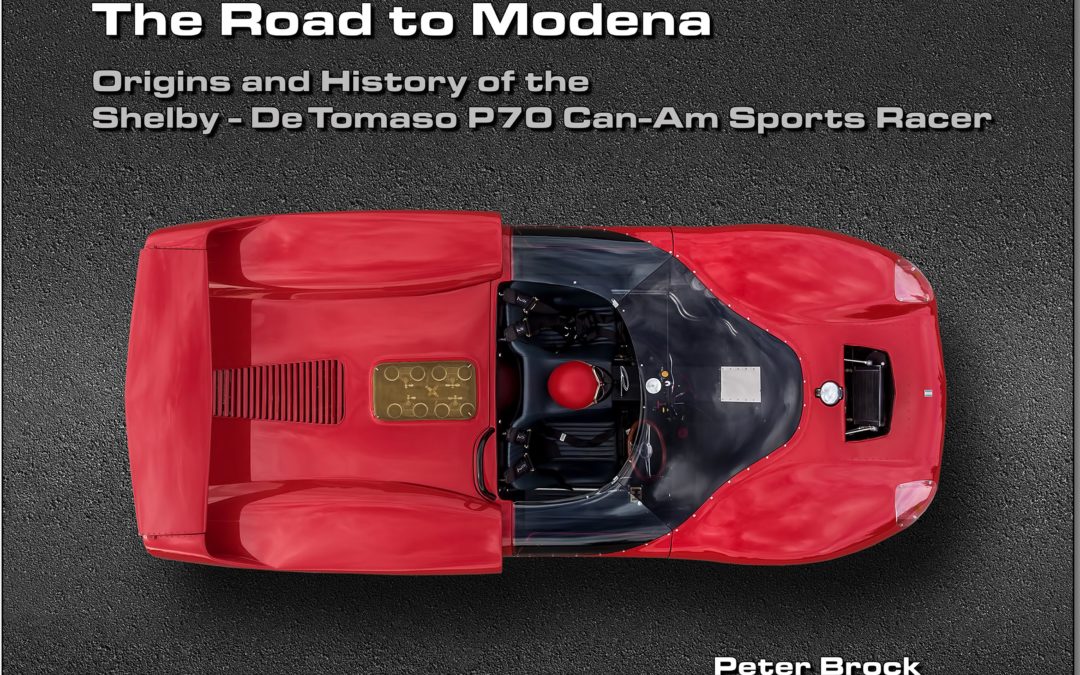
Origins and History of the Shelby – De Tomaso P70 Can-Am Sports Racer
In this book I cover my years at Shelby American with a focus on the time I spent in Modena, Italy designing the Shelby – De Tomaso P70 for Carroll Shelby, a car planned for the emerging Can-Am series.
Working in Modena was one of the best experiences of my life. I started to write the history and creation of the P70, and the stunning body construction techniques I learned from the Italian artisans, when I realized I had to put the car in context of this incredible time period and also describe what was happening with Carroll’s numerous projects, racing and the other cars I was designing.
I share the transition from the Cobra’s first appearance in ‘62 to its championship in ’63, through to the King Cobra USRRC race period to the transition to Can-Am. Shelby’s every move was well thought out and intentional, all with the ultimate goal of getting Ford’s lucrative GT40 program but having contingency plans in case it didn’t happen. Shelby’s venture with Alejandro de Tomaso on the P70 was one of those contingencies.
Looking back, these few short years turned out to be some of the most interesting and innovative in sports racer history. The quest to understand and harness air flow and ground effects led to amazing creativity. The Can-Am race series showcased it to the world.
My designs during this period at Shelby’s included the FIA World GT Champion Daytona Cobra Coupe, the Shelby GT350 Mustang, the Lang Cooper, the Nethercutt Mirage, Shelby’s Can-Am spec racer as well as the Shelby – De Tomaso P70. I give the inside story of each and the pivotal role talented driver Dave MacDonald played in Shelby’s plans.
I trust you will also enjoy the details and photos I share of how the P70 body was built with the unique techniques of the talented craftsmen of Modena and how, even though Shelby cancelled the project near its end, the P70 launched de Tomaso into the spotlight. — Peter Brock
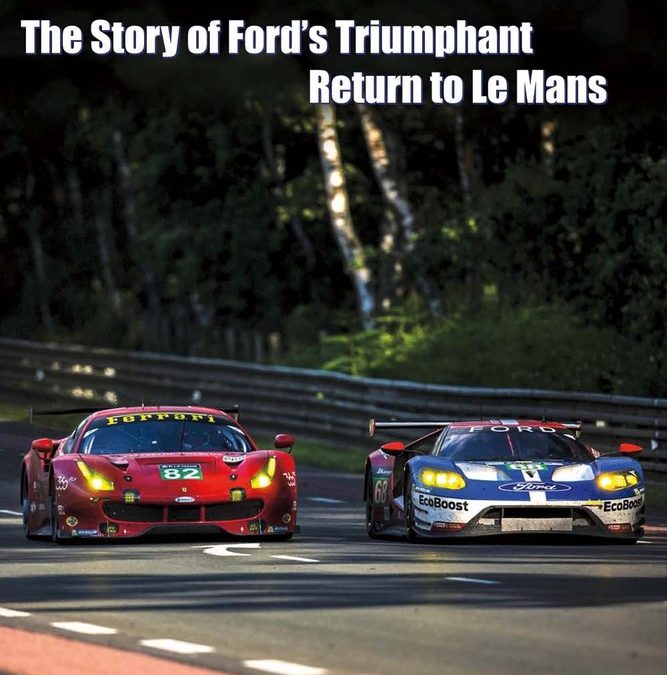
“A Big Ask” is the inside story of the Ford Motor Company’s return to the world’s most famous sports car race – The 24 Hours of Le Mans – as told by veteran motorsports journalist David Phillips and accompanied by more than 100 color images by some of the world’s leading racing photographers. Half a century ago, Ford’s battles with Ferrari for supremacy at Le Mans became the stuff of legends. Rebuffed in his bid to buy Ferrari, Henry Ford II spent untold millions to defeat the iconic Italian marque in a race it had come to dominate in the early 1960s. After two years of humiliating failure, the Ford GT40 delivered a storied 1-2-3 finish at Le Mans in 1966, the first of four straight wins for the American automaker. Ford returned to Le Mans in 2016 with a 21st century Ford GT and a bold mission: Celebrate the golden anniversary of its legendary 1-2-3 finish in 1966 with another victory. But Ford did not go it alone. Boasting a driver line-up of “Le Mans Assassins,” Ford partnered with powerful Chip Ganassi Racing, winners of the Indianapolis 500, 24 Hours of Daytona and Daytona 500, world-renowned Multimatic Engineering, and a host of world-class suppliers in an effort to win the 24 Hours of Le Mans. Veteran motorsports journalist David Phillips was embedded with Ford Chip Ganassi Racing throughout what proved to be an exhausting and exhilarating journey, from the development of the Ford GT and its problematic competition debut through to its first successes and, finally, triumphant performances at Le Mans and beyond. With unfettered access to all of the key players at Ford, Chip Ganassi Racing and Multimatic, he provides a detailed, insightful and compelling account of Ford Chip Ganassi Racing’s audacious bid to win the 24 Hours of Le Mans that will be a welcome addition to the collection of any motorsports aficianado, automotive buff or sports fan.
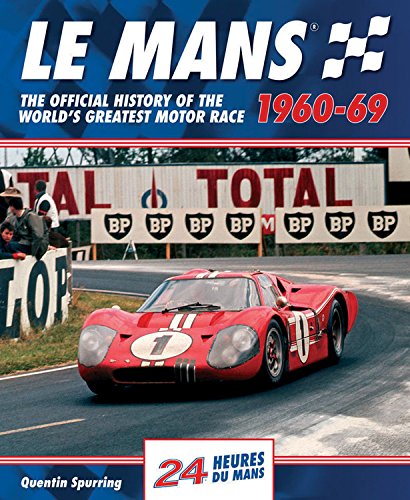
This was the defining decade for the Le Mans 24 Hours. It started with six consecutive victories by Ferrari, overwhelming Aston Martin and Maserati. But then Ford threw its all-American dollars at the race and won it four times in a technically exciting period that also brought the competitive emergence of brands such as Alfa Romeo, Matra, Porsche and Renault. The participation of great automobile manufacturers spurred the development of many iconic racing cars: Ferrari Testa Rossa and GTO, Ford GT40 and Daytona Cobra, Porsche 904 and 917. The machines that were specially built for Le Mans evolved through the decade from front-engined brutes to mid-engined monsters. By the end of the period, many of them could achieve more than 200mph on the awesome straights that defined the race, thrilling as many as 300,000 spectators at trackside.
– Highly detailed year-by-year coverage of the decade’s ten races, giving over 30 pages of information and photographs for each year.
– Official status provides a number of unique features, including the reproduction of the full-colour race poster artwork for each year and photographs from the ACO’s archives.
– The images include rare color, and the emphasis is on photographs that enthusiasts will not have seen before.
– The story of each race is told through photographs and an accompanying commentary.
– Complete data for each year includes technical regulations, entry list, circuit changes (with diagram), lap chart, full results and category awards.
– The whole work is beautifully designed and presented.
– The 1960s was the decade of Ferrari and Ford: the Italian manufacturer took six consecutive wins until Ford finally came good, winning the decade’s other four races, including the 1969 thriller that saw the closest ever finish at Le Mans.

When American Cars were a Way of Life
This book will allow you to enter the magical world of the historic American automobile with the aid of outstanding period photographs. Over 450 pages containing more than 600 pictures, selected by the author with informative captions, capturing moments in life associated with cars made in the USA. A fascinating tour using the automobile to illustrate American society, from the ’30s to the end of the ’70s, creating an exciting and unforgettable journey through time. A picture is worth a thousand words. With this in mind, this book illustrates an unforgettable bygone age. Retro Graphic will immerse you in the greatest history of the American automobile, from the 1930s to the end of the ’70s, with fascinating and previously unpublished photographs of the era. Retro Graphic is much more than simply a collection of photos, it is an atrtistic fresco of the US automobile seen through society at the time. A picturesque historical trip through the last century, which thanks to American cars has been impressed on our collective memories. When Detroit was known as the centre of the world, the American automobile was a way of life. A time when the car was a triumph of human style and design. When it was part of the choreography of the city streets and the landscape. When it became the indispensable co-star in films of the era. The American automobile: when it was an iconic companion through every stage of life. Title: RETRO GRAPHIC Dimensions: 24,5×30,5 cm Text: English and Italian Author: Gian Paolo Varetto Editor: Edizioni GP Pages: 450 Photos: over 600 b/w and colour Publication

“Ralph De Palma was one of the greatest race car drivers of all time. He was a champion on the early American road courses, won during the speedway era and may have been the best dirt track racer in the history of the sport. He was one of the few American drivers to compete successfully in Europe before World War II, racing in three French and the first Italian Grand Prix.
His competitive career lasted from 1907 to 1934, driving a host of different race machines. After retirement, until his death, he remained part of the sport as its most recognizable ambassador.
Originally emigrating to America with his family from Italy in the 1890s, Ralph’s life was part of and concurrent with the monumental changes American culture and society experienced as economics, reform, immigration and war shaped the country’s history. Affected by all of it he pursued fame and fortune through his chosen profession…piloting race cars.
Unlike many of his contemporaries and friends he survived the inhospitable cockpits of the early balky race cars and later, drove the high tech Duesenbergs and Millers that defined modern American open wheel racing. Through it all Ralph was a professional. His racing operations were first class and he always acted with great sportsmanship and integrity.
Ralph De Palma is 384 pages on 80# matte paper with 300 varnished historic photographs and 20 paintings, many unpublished from 25 different collections. As in the Murphy book there is artwork to add interest, color and drama. Unlike the King of the Boards, where several artists were utilized, Gentleman Champion is illustrated by Peter Helck and Peter Hearsey. Helck, of course, focused much of his work on De Palma’s exploits while Hearsey is tackling new subject matter.”
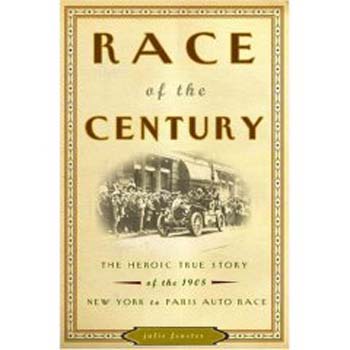
“17 men, 6 cars, and a 21,000-mile race across 3 continents
On the morning of February 12, 1908, six cars from four different countries lined up in Times Square, surrounded by a frenzied crowd. The men who competed in the New York to Paris auto race were an international roster of personalities: a charismatic Norwegian outdoorsman, a witty French nobleman, a pair of Italian sophisticates, an aristocratic German army officer, and a cranky mechanic from Buffalo, New York. At a time when most people had never seen an automobile, these adventurous men set their course over mountain ranges, through Arctic freeze, and desert heat. There were no gas stations, no garages, and no replacement parts in case of emergency.
Two men rose to the top. Ober-lieutenant Hans Koeppen, a rising officer in the Prussian army, led the German team in their canvas-topped 40-horsepower Protos. His amiable personality belied a core of sheer determination, and by the race’s end, he had won the respect of even his toughest critics. His counterpart on the U.S. team was George Schuster, a blue-collar mechanic who led the Americans in their lightweight 60-horsepower Thomas Flyer. A born competitor, Schuster battled Koeppen until the very end. Ultimately the German and the American would be left alone in the race, fighting the elements, exhaustion, and each other until the winning car’s glorious entrance into Paris, on July 30, 1908.”
Autobooks-Aerobooks 2900 W. Magnolia Blvd. Burbank, CA 91505 (818) 845-0707 Hours: Tuesday-Friday 10:00 AM – 6:00 PM Saturday 10:00 AM – 6:00 PM Closed Sunday and Monday Accept Credit Cards gift cardYES, We have Gift Cards - Click Here AUTOBOOKS IS OPEN...











